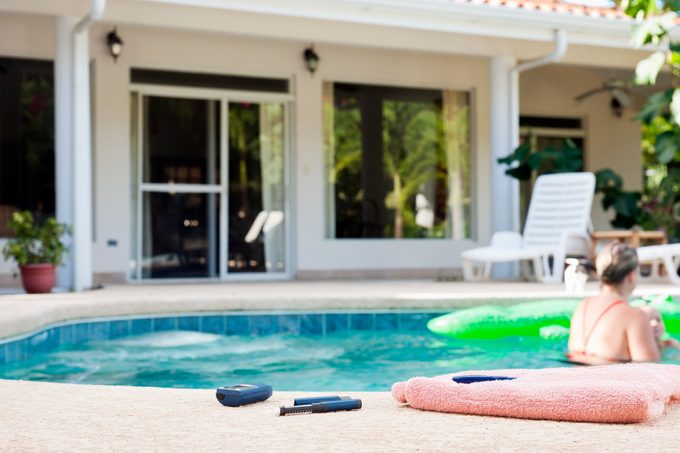Swimming Tips for People with Diabetes
Updated: Jul. 09, 2020
The swimming pool is a great place for people with diabetes to get active!
If you’re overweight, or if you have joint or balance problems, foot pain from nerve damage, or other physical limitations—all of which are common among people who have diabetes—the swimming pool is a great place to get active. Since your weight is “reduced” by 90 percent in the water, swimming gives overweight people the buoyancy they need to keep their aerobic sessions going longer and move their bodies in ways they might not be able to do otherwise. Swimming is excellent aerobic exercise with an added benefit over walking: It exercises both the upper and lower body.

A water aerobics class may be the best way to get a full-body workout in the pool—and you don’t even need to know how to swim. If there’s upbeat music playing and you’re with a nice group of people, you may even feel a little bit like you’re at a party. Want to get competitive? Your pool might have a recreational water volleyball team, so call and inquire.
Your buoyancy in the water is already protecting your joints from impact, but if you need even more lift, a kickboard will help. They’re also handy if you’re not confident of your swimming ability and want extra help in staying afloat. People who just want to exercise their legs can grab a kickboard by its sides and propel themselves through the water with leg power.
Swim one pool length (25 meters in a standard pool), and then rest for 30 seconds. If that didn’t challenge you, alternate swimming for 5 minutes and resting for 1 minute. Each time you visit the pool, add gradually to your swimming distance, resting as needed until you reach 30 minutes of total swim time each session. To steadily improve your aerobic fitness, swim three times a week. If your sight is impaired, ask about “lap time.” Many pools set aside times exclusively for lane swimming, during which swim lanes are roped off and recreational swimmers splashing around are prohibited. Having your own designated lane reduces the chances that you’ll collide with someone you couldn’t see coming.
Swimming when you have an open wound isn’t a good idea because it increases your risk of infection. Rather than skipping your aqua-workout when you have a cut or sore, ask your doctor whether a waterproof bandage or another skin barrier is appropriate for your situation. Be sure to clear the bandage with the pool’s lifeguard or manager before you jump in.
It may harder when you’re in a pool to tell if you’re sweating or feeling weak so be vigilant, and get out of the pool if you can as soon as you suspect a problem.[/step-item]
If your blood sugar drops while you’re in the water, you may not have time to get out and go to your locker to reach your snack. So keep a high-carbohydrate snack in a zip-close plastic bag poolside while you swim. If the pool has rules against keeping food near the water, talk to the lifeguard, pool manager, or your water aerobics instructor and explain your needs—they will probably make an exception, or at least will allow you to keep glucose tablets or gel handy.

If you’re at the beach or an outdoor pool on a warm day and you want to disconnect your insulin pump and swim, keep the pump cool so the insulin doesn’t deteriorate. Place the insulin pump in a zip-close plastic bag, wrap a small towel around it, and place it in a cooler. Alternatively, check with your pump’s manufacturer to see if it offers a special protective, waterproof pouch for your model.
Some insulin pumps are advertised as being “waterproof” (sometimes with the use of inserts to plug the vent holes), but read the instructions carefully about the limits of this protection. The waterproofing may only apply to near-the-surface use and may not apply if you’re diving more than about nine feet underwater. If you find that the tape on your infusion set keeps coming loose in the water, pick up a very lightweight wet suit T-shirt and wear that over the infusion set. The close-fitting shirt will prevent water from peeling up the edges of the tape.
Otherwise, the chlorine from the pool water will dry out your skin and might cause it to crack, which will make you more vulnerable to infection.
People with diabetes are prone to slower healing, and serious infections in the feet can even lead to amputation. Wearing water shoes or aqua socks when you’re swimming in a lake or ocean will help prevent injuries from rocks, sea life, glass, or other debris. Wearing protection in man-made swimming areas isn’t a bad idea either; the concrete floors of some pools are abrasive.
The water may feel cool against your skin, but you could still get burned under the hot sun, even on overcast days. Sunburn is not healthy for anyone, but it’s particularly vexing for people with diabetes because it can take longer to heal and, if it’s bad, could possibly raise your blood sugar.